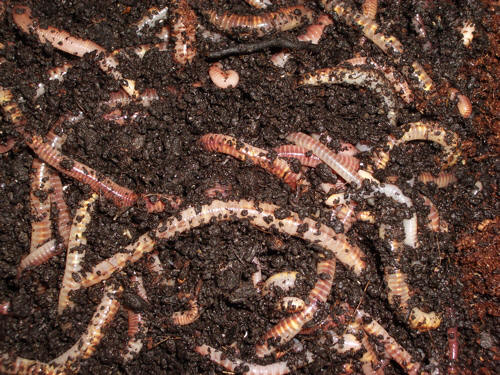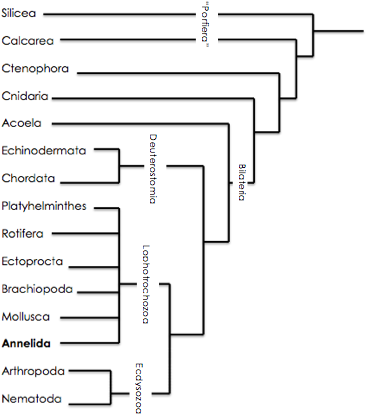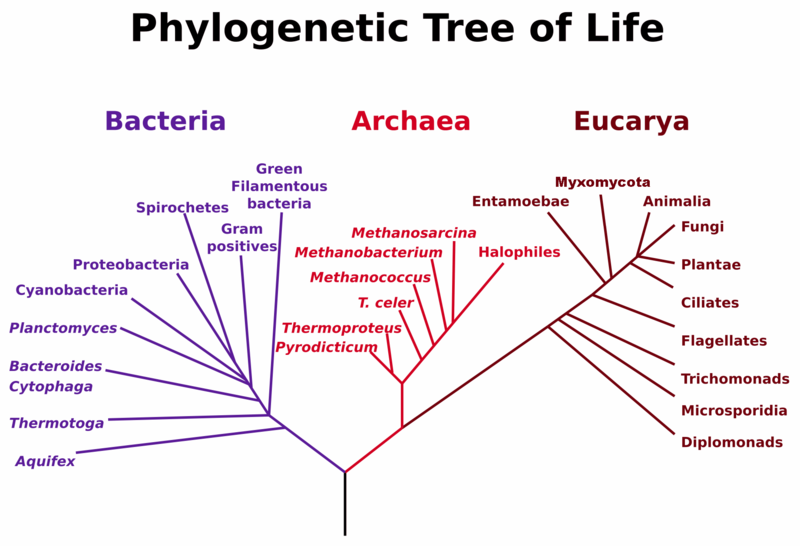Classification
Common names for Lumbricus
terrestris:
Earthworm,
Night crawler, Squirrel Tail, Twachel, Dilly Worm, Green
Crawler, Large Crawler Lob Worm (Britain), Dew
Worm (Canada), Granddaddy Worm (Canada) (Encyclopedia of Life
2013)
The scientific name Lumbricus terrestris derives from Latin roots. The word "Lumbricus" simply means worm, while "terrestris" denotes "earthly", "terrestrial", or "ground", which leads to its most common name, earthworm (Google Translate 2013).
 Scientific
Classification
Scientific
Classification
Domain:
Eukarya
Kingdom: Animalia
Class: Clitellata
Subclass: Oligochaeta
Species: L. terrestris
(Encyclopedia of Life, 2013)
In above figure, you can see
the separation of the three domains of life. Earthworms fit into the
Kindgom Animalia, as stated above. You can see from the image that
in terms of this tree that Animalia is most closely related to the
Kingdom Fungi and Kingdom Plantae.
 Phylum: Annelida
Phylum: Annelida
In the figure on the right, you are able to further understand where Earthworms fit into the tree of life. According to the tree, Annelids are classified as both "Lophotrochozoa" and "Bilateria". The term lophotrochozoa can be defined as organisms having either a lophophore ("tentacle"-like feeding structures) or trochopore larva (Campbell et al. 2013). Bilateria is a term used to desribe organisms with symmetry of the upper/lower regions or the left/right regions (Campbell et al. 2013). A few of their closest relatives according to this tree are Mollusca (snails) and Platyhelminthes (flat worms) (Campbell et al. 2013).
Class: Clitella
Clitellata is the class of annelid worms, which are characterized by having a clitellum (Encyclopedia of Life 2013). A clitellum is a section of the body that is near that head that secretes a sac where the eggs are comprised (Campbell et al. 2008). This is a glandular section that is thicker than the rest of the body. There are approximately 8,000 species that fit this classification (Animal Diversity Web 2013).
There are over 3,000 species that are known in this subclass (Encyclopedia of Life 2013). All oligochaetas have chaetae (a stiff hair-like or bristle-like structure made from chitin), but the number of setae is much less than in the polychaeta class (Campbell et al. 2008). They also tend to have a reduced head and have no parapodia, which are paired muscular appendages used for mainly locomotion (Campbell et al. 2008).
Order: Haplotaxida
The Lumbricidae family is divergent from other familities that lie within the order of Haplotaxida by its dorsal setal pairs that are located ventrally, laterally, or dorsolaterally (Griffith et al. 2013). It also contains organsims with a saddle-shaped clitellum (a raised band that encircles its body), which occupies segment numbers four to thirty-two (Brinkhurst 1982). However, the greatest differentiation is based off of the general location of certain structures, such as the sperm pores, gizzards, or the clitellum (Brinkhurst 1982).
Species:
L.
terrestris
As stated above, “Lumbricus”
translates to “worm” and “terrestris” to “earthly”,
"terrestrial" or “ground” (Google Translate
2013). L. terrestris
is defined as "anecic" which refers to their ecological
environments (Griffith et al. 2013). Anecic worms are substantially affected from soil
depth and pH levels as well (Kizilkaya et al. 2011). They densely inhabit lower layers of
soil, aiming for places where the pH level is between 5.0 and 7.4
(Kizilkaya et al. 2011).
If you would like to know more intricate information about the
makeup of L. terrestris involving their DNA, click
here to be brought to an artical by J. L. Boore and W. M. Brown.
Find out more details where earthworms live on the Habitat page!
Check out where we gathered our information from on our Reference page
